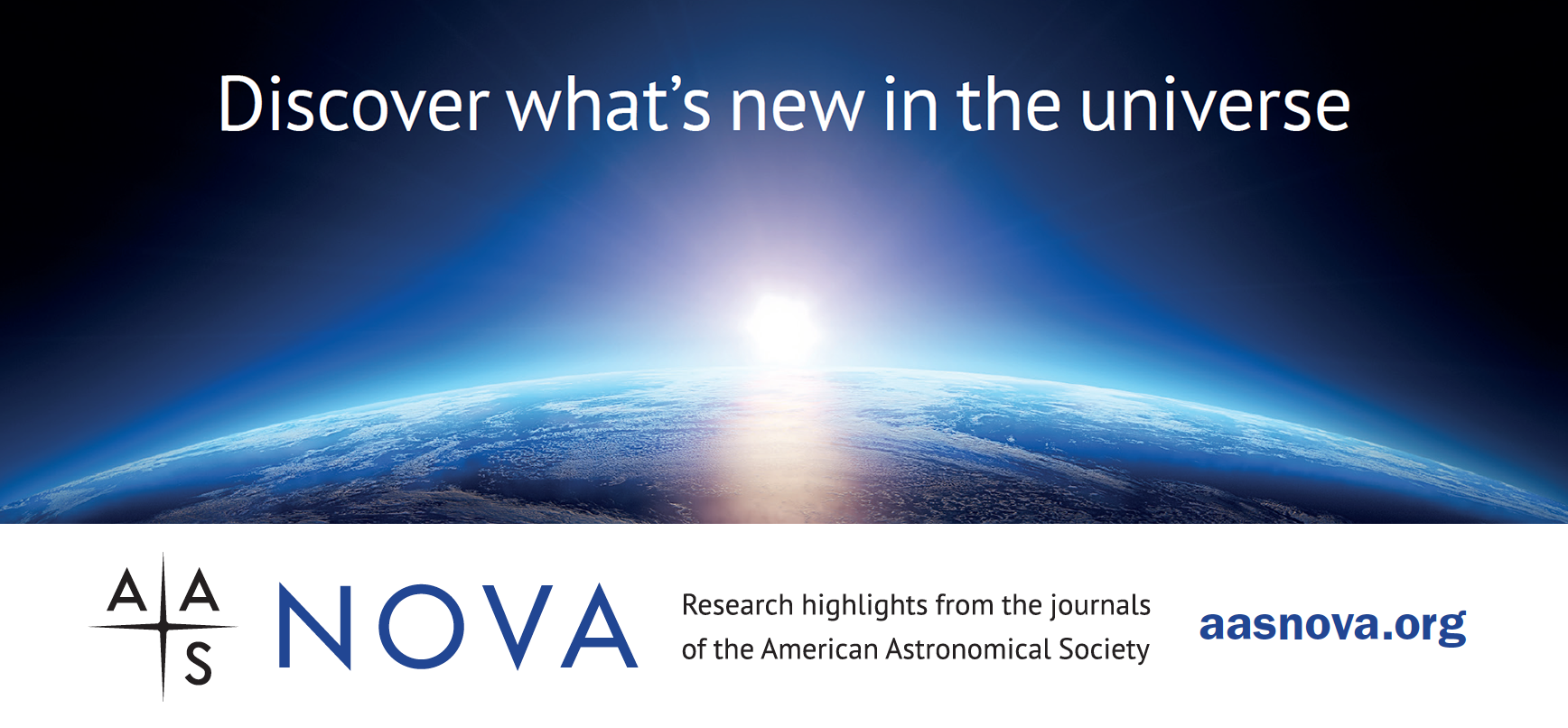Highlights from AAS Nova: 1-14 May 2022

Kerry Hensley American Astronomical Society (AAS)
AAS Nova provides brief highlights of recently published articles from the AAS journals, i.e., The Astronomical Journal (AJ), The Astrophysical Journal (ApJ), ApJ Letters, ApJ Supplements, The Planetary Science Journal, and Research Notes of the AAS. The website's intent is to gain broader exposure for AAS authors and to provide astronomy researchers and enthusiasts with summaries of recent, interesting research across a wide range of astronomical fields.

The following are the AAS Nova highlights from the past two weeks; follow the links to read more, or visit the AAS Nova web page for more posts.
12 May 2022
First Image of the Milky Way’s Supermassive Black Hole
The planet-spanning Event Horizon Telescope has captured the first image of Sagittarius A*, the supermassive black hole at the center of the Milky Way.
11 May 2022
Diving Deep into Bright Galaxies with SCUBA-2 COSMOS
A close look at bright galaxies in the first few billion years of the universe may help us understand why these early galaxies formed stars so vigorously.
10 May 2022
How a Moon-Sized Deep Impact Affected Early Life on Earth
Astrobites reports on Earth’s early days, when massive asteroid impacts may have rendered our home planet somewhat less than hospitable.
9 May 2022
Spotting Dots on the Sun
The Solar Orbiter spacecraft has snapped photos of tiny, bright dots on the Sun. What’s the deal with these dots?
6 May 2022
Perspectives on Data Management, Stewardship, and Preserving Astronomical Artifacts
A new special collection of the Bulletin of the American Astronomical Society encapsulates the work presented at LISA IX, a conference dedicated to stewardship of historical and modern astronomical data.
4 May 2022
Could Binary Stars Help Trace the Milky Way’s Dark Matter?
What do binary stars have to do with dark matter? More than you might expect!
3 May 2022
Which Habitable Zone Planets Are the Best Candidates for Detecting Life?
Astrobites reports on the “continuous habitable zone” — an important criterion for selecting exoplanets for future atmospheric characterization.
2 May 2022
Featured Image: Deep Imaging of a Radio Relic
Nearby galaxy cluster Abell 2256 is home to some amazing radio structures, which new observations have revealed in greater detail than ever before.


